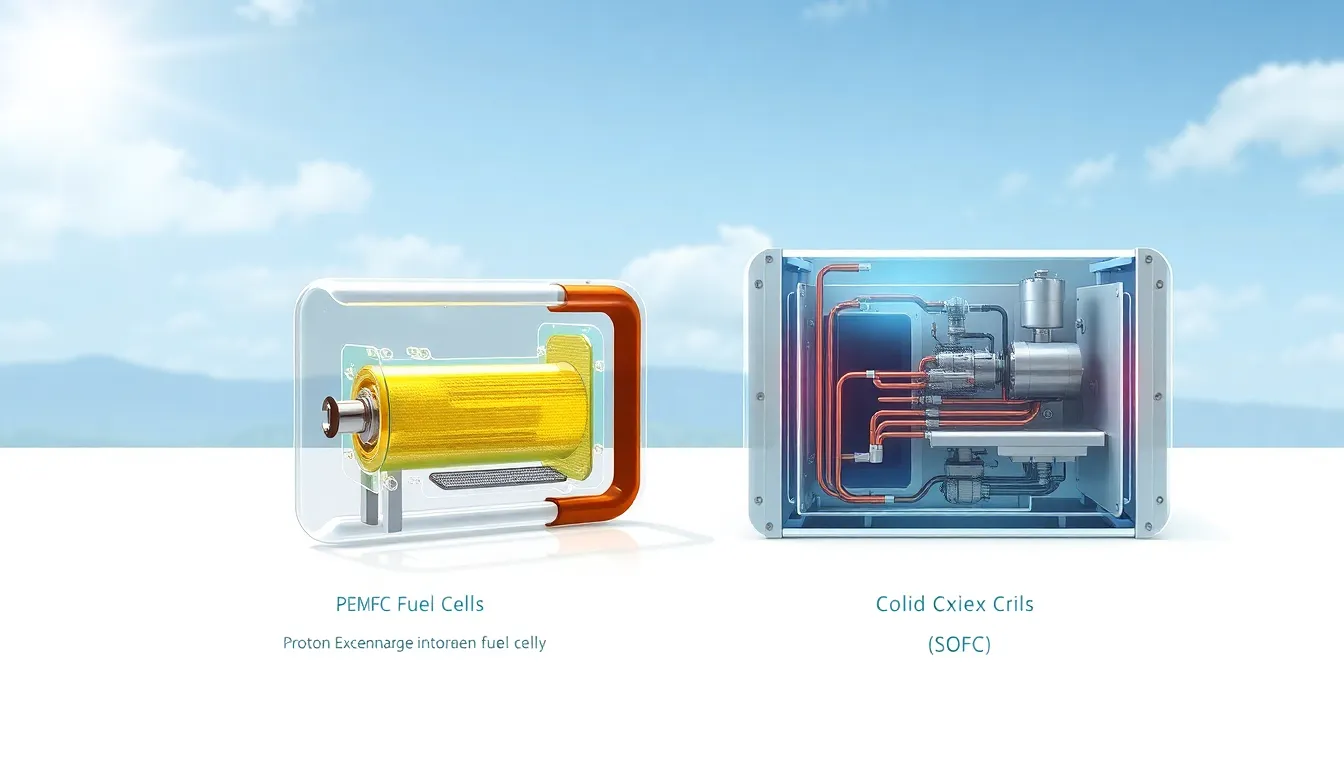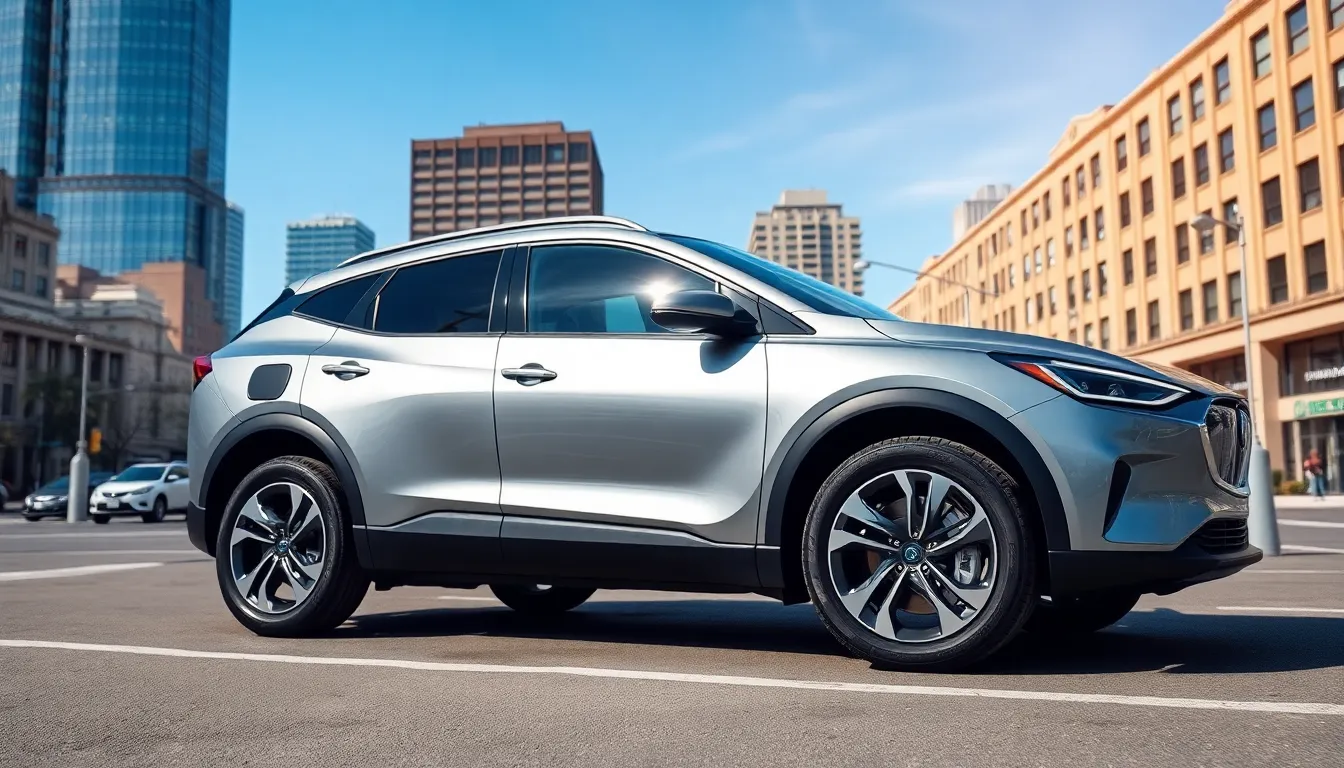Hydrogen fuel cells are emerging as a game-changer in the quest for clean energy solutions. As the world grapples with climate change and the need for sustainable alternatives, these innovative technologies offer a promising way to power vehicles, homes, and industries without harmful emissions. By converting hydrogen into electricity, fuel cells provide a reliable and efficient energy source that can significantly reduce reliance on fossil fuels.
The appeal of hydrogen fuel cells lies not only in their environmental benefits but also in their versatility. They can be used in various applications, from powering electric vehicles to providing backup energy for critical infrastructure. As advancements in technology continue to unfold, the potential for hydrogen fuel cells to reshape the energy landscape becomes increasingly evident, making them a vital player in the future of clean energy.
Table of Contents
ToggleOverview of Hydrogen Fuel Cells
Hydrogen fuel cells represent an advanced technology for clean energy production. They efficiently convert hydrogen into electricity, showcasing significant potential across various industries.
What Are Hydrogen Fuel Cells?
Hydrogen fuel cells are electrochemical devices that generate electricity through the reaction of hydrogen and oxygen. These cells produce water as the only byproduct, making them environmentally friendly. Key components include an anode, cathode, and an electrolyte membrane. Hydrogen atoms split at the anode, releasing electrons and creating positively charged ions that pass through the electrolyte to the cathode.
How Do Hydrogen Fuel Cells Work?
Hydrogen fuel cells operate via an electrochemical process. Upon supplying hydrogen to the anode, the hydrogen molecules ionize, releasing electrons. These electrons, after traveling through an external circuit, create an electric current. Meanwhile, the positive ions move across the electrolyte to the cathode, where they combine with oxygen and the incoming electrons to produce water. This process ensures a continuous flow of electricity as long as hydrogen and oxygen are available.
Types of Hydrogen Fuel Cells

Hydrogen fuel cells come in several varieties, each suited for specific applications and operating conditions. The two primary types include Proton Exchange Membrane Fuel Cells and Solid Oxide Fuel Cells.
Proton Exchange Membrane Fuel Cells
Proton Exchange Membrane Fuel Cells (PEMFCs) operate at relatively low temperatures, typically between 50°C and 100°C. PEMFCs use a solid polymer electrolyte, which enables quick reactions and high power densities. These cells are commonly employed in transportation applications, such as hydrogen-powered vehicles, due to their rapid start-up capabilities and efficiency. The lightweight design of PEMFCs makes them ideal for applications where weight is critical, such as in automotive and portable electronic devices.
Solid Oxide Fuel Cells
Solid Oxide Fuel Cells (SOFCs) operate at high temperatures, ranging from 600°C to 1,000°C. SOFCs utilize a solid ceramic electrolyte, allowing for the efficient electrochemical reaction of hydrogen with oxygen. This type of fuel cell is known for its high efficiency and versatility in using various fuels, including natural gas and biogas, besides hydrogen. SOFCs are widely utilized in stationary power generation and combined heat and power applications because of their ability to deliver consistent and reliable energy output over longer durations.
Applications of Hydrogen Fuel Cells
Hydrogen fuel cells demonstrate versatility across multiple sectors, contributing significantly to clean energy initiatives. Key applications include transportation, power generation, and portable power sources.
Transportation
Hydrogen fuel cells are increasingly used in the transportation sector, particularly in fuel cell electric vehicles (FCEVs). These vehicles utilize Proton Exchange Membrane Fuel Cells (PEMFCs) for their efficiency and quick refueling capabilities. Major automotive manufacturers, such as Toyota and Honda, have developed FCEVs that provide driving ranges comparable to gasoline-powered cars, typically between 300 and 400 miles. Additionally, hydrogen fuel cells support public transportation systems, exemplified by hydrogen-powered buses operating in cities like London and Los Angeles, promoting sustainable urban mobility.
Power Generation
Hydrogen fuel cells play a crucial role in power generation, especially in stationary applications. Solid Oxide Fuel Cells (SOFCs) excel in this domain due to their high efficiency and ability to operate on various fuels, including natural gas. These systems can generate electricity for residential and commercial buildings, providing an alternative to fossil fuel-based energy sources. The integration of hydrogen fuel cells into the electrical grid enhances reliability and stability, particularly during peak demand periods or in remote locations lacking grid access.
Portable Power Sources
Hydrogen fuel cells serve as effective portable power sources for various applications. They supply electricity to remote equipment, backup power systems, and recreational vehicles. Lightweight and compact, these fuel cells produce clean energy without noise or emissions, making them suitable for outdoor activities and essential services in emergencies. Companies are increasingly adopting portable hydrogen fuel cells to power drones and equipment, showcasing their effectiveness in diverse scenarios, from military operations to disaster relief.
Advantages and Disadvantages of Hydrogen Fuel Cells
Hydrogen fuel cells present various advantages and challenges that influence their adoption across industries. Understanding these factors aids in evaluating their potential as a sustainable energy solution.
Benefits
- Environmental Impact: Hydrogen fuel cells generate electricity while producing only water as a byproduct, significantly reducing greenhouse gas emissions compared to traditional fossil fuels.
- Efficiency: Fuel cells convert hydrogen into electricity at efficiencies of up to 60%, surpassing the typical efficiency of combustion engines.
- Refueling Time: Hydrogen fuel cell vehicles (FCEVs) can be refueled in 3 to 5 minutes, offering a convenience that rivals gasoline-powered vehicles.
- Energy Storage: Hydrogen serves as an effective energy storage medium. It can be produced during periods of low demand and utilized when demand increases.
- Versatility: Hydrogen fuel cells can function across multiple applications, including vehicles, commercial power generation, and backup energy systems, making them applicable in diverse sectors.
Challenges
- Infrastructure Development: The widespread implementation of hydrogen fuel cells demands significant investment in infrastructure, including hydrogen production and distribution facilities.
- Production Costs: Currently, hydrogen production can be costly, particularly when produced through electrolysis, which requires substantial energy input.
- Storage and Transport: Storing and transporting hydrogen presents logistical challenges, as it must be stored under high pressure or at low temperatures to maintain efficiency.
- Fuel Cell Longevity: The durability of fuel cells varies, with some designs facing degradation over time, leading to reduced lifespan and performance.
- Public Perception: Misconceptions about safety and the technology’s reliability hinder broader acceptance of hydrogen fuel cells as a practical energy solution.
Future of Hydrogen Fuel Cells
Hydrogen fuel cells are positioned for significant advancements and market growth, driven by innovations and shifting market trends. The future depends on ongoing research and the evolving landscape of energy solutions.
Innovations and Research
Innovations in hydrogen fuel cell technology focus on improving efficiency, reducing costs, and enhancing durability. Research emphasizes developing new materials for membranes and electrodes that improve performance while decreasing reliance on precious metals, such as platinum. Breakthroughs in hydrogen production methods, such as electrolysis using renewable energy sources, aim to provide sustainable hydrogen supply. Additionally, hybrid systems that integrate hydrogen fuel cells with batteries are gaining attention for their potential to enhance energy storage and management. Continuous investment in research and partnerships among governments, academia, and private sectors fosters advancements that drive the adoption of hydrogen fuel cells.
Market Trends
Market trends highlight a growing acceptance of hydrogen fuel cells across multiple industries. The transportation sector sees increased interest, with projections estimating that sales of fuel cell electric vehicles (FCEVs) could reach 2.5 million units annually by 2030. Renewable energy integration is also on the rise, as utility companies explore hydrogen fuel cells for grid support and energy storage solutions. Furthermore, collaborations between automotive manufacturers and fuel cell technology firms promote innovation and scalability. As policies support clean energy initiatives, the demand for hydrogen fuel cells is expected to accelerate, positioning them as a vital component in the global energy landscape.
Hydrogen fuel cells represent a transformative shift in the pursuit of clean energy solutions. Their ability to generate electricity with minimal environmental impact positions them as a key player in combating climate change. As advancements continue and infrastructure develops, the versatility of hydrogen fuel cells will become increasingly apparent across various sectors.
The momentum behind hydrogen fuel cells is undeniable. With growing interest from manufacturers and supportive policies, they’re set to reshape the energy landscape. The future holds promise for enhanced efficiency and broader applications, making hydrogen fuel cells an essential component of sustainable energy strategies moving forward.





